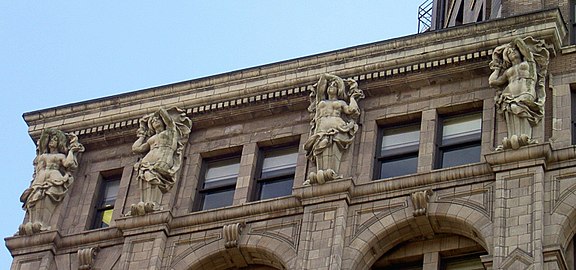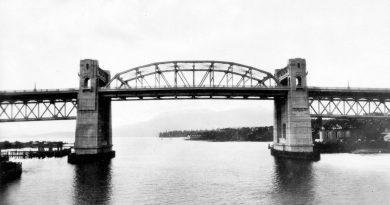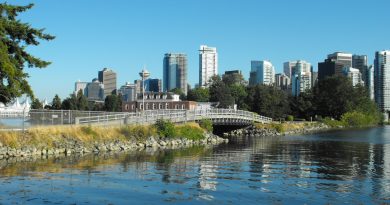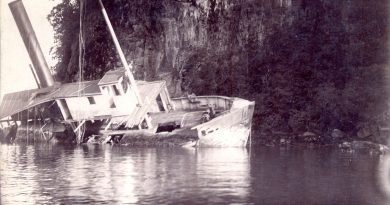The Sun Tower
One of the most familiar landmarks in Vancouver has been looming over the southeast corner of Pender and Beatty streets for more than 90 years. It’s a reminder of the stubbornness and determination of one of the city’s newspaper pioneers, Louis Denison Taylor.
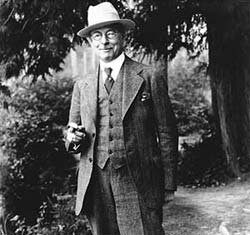
In 1896, working in Revelstoke, “L.D.,” as he was known, saw an advertisement placed by a Victoria newspaperman, Hewitt Bostock, seeking a man to run a new daily, The Vancouver Daily Province. (Bostock wanted to provide competition to the two daily papers already operating, the World and the News-Advertiser.)
L.D. came to Vancouver, but the publisher’s job went to Walter Nichol. The first issue appeared March 26, 1898. In 1899 Taylor became the new paper’s circulation manager.
After seven years in that job, L.D. got restless and began looking for a bigger opportunity. It came with the news that the World was up for sale. The World was the leading evening paper in the city’s early days. It had been founded in September 1888 by J.C. McLagan, who had previously launched the Victoria Times. McLagan had just died and his wife had been running the paper.
In June 1905 Taylor, with others, bought the World. Under L.D. the paper prospered—fabulously. His timing was fortunate because a real estate boom was sparking a general economic explosion in Vancouver. The paper got fatter and fatter, and one day about 1910 was able to boast that it carried the largest amount of display advertising of any daily newspaper in North America.
It was a lively, aggressive paper and it made Taylor a big man in town. In 1909 he ran for mayor and was elected, launching a unique political career in Vancouver that saw him run for the mayor’s office again and again, and win and lose and win and lose over and over. He still holds the record for length of time in office.
About the time the World was bragging of its ad-fatness, L.D. made a fatal error. He knew the paper needed a new plant, but his decision about its size was to lead to disaster.
He made it too big.
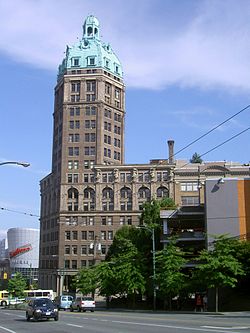
Image: Wikipedia
At 17 storeys and 272 feet the World Building was the tallest in the British Empire . . . and would be for the next two years. It had more than 84,000 square feet of floor space, immense for the time. There was another reason it attracted a lot of attention: In his excellent 2004 biography of Taylor (titled LD: Mayor Louis D. Taylor and the Rise of Vancouver) Daniel Francis writes, “A row of nine semi-draped female figures, sculpted by Charles Marega, supports a cornice about halfway up the building; the bare breasts and sensuous poses scandalized the city’s bluenoses.”
In a reversal of his good fortune in buying the World just before a real estate boom triggered general economic good times, Taylor now witnessed his building sitting largely empty because of an economic slump. A recession that began in 1913 dealt his company, along with many others, a serious blow. (The World was not alone: between 1914 and 1922 some 40 Canadian newspapers went under.)
In 1915 Taylor lost control of the newspaper and the building.
In 1924 the tower was sold to Bekins, a Seattle moving company. A huge sign went up on the roof and the Bekins Building joined the Vancouver skyline. It held on to that name for nearly 13 years. Then an event across the street changed its history. On March 22, 1937 the offices of The Vancouver Sun across Pender were destroyed by fire. The newspaper needed a new home and needed it fast.
On May 18, 1937 the Sun bought the tower and moved in. It’s been known as the Sun Tower ever since, even retaining the name when, in 1965, the paper moved out of the tower and up to 2250 Granville Street. (Today, of course, both the Sun and the Province are in Granville Square at the north foot of Granville Street.)
For a couple of years, the building stood empty.
Today, handsomely restored, and still known as The Old Sun Tower, it’s a successful office building.
p.s. During my research into this story, I came across a really interesting web page on the history of Bekins. It has a couple of terrific photos.

